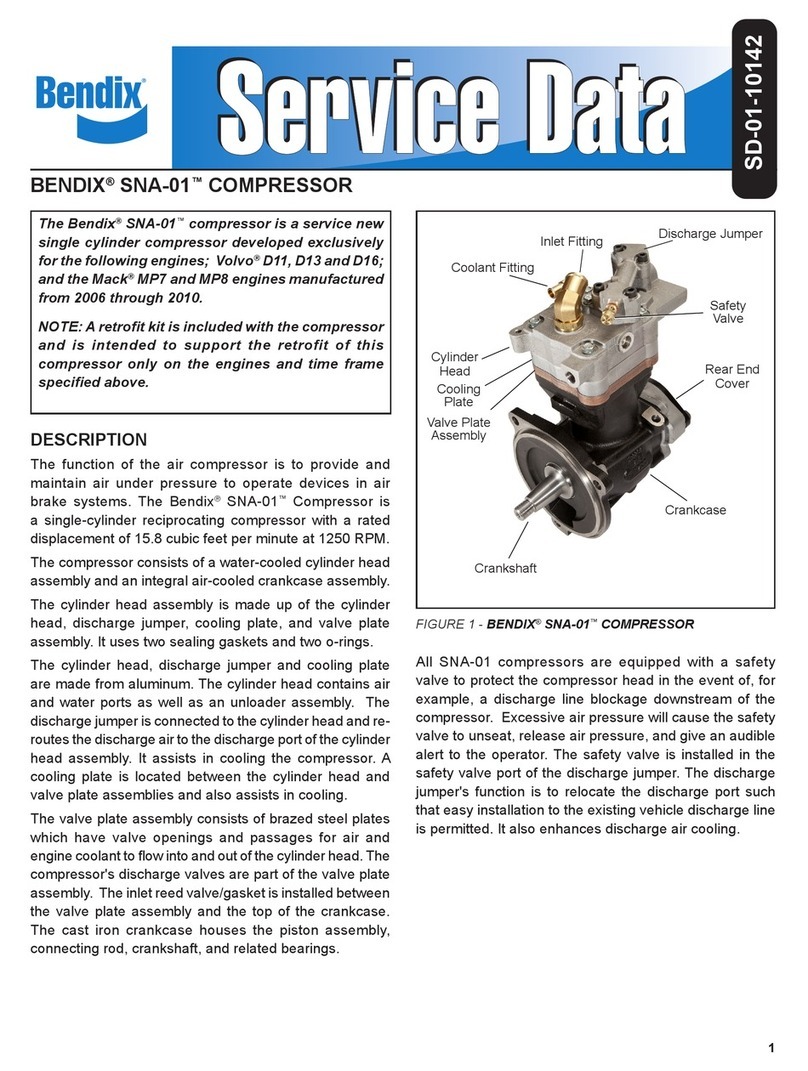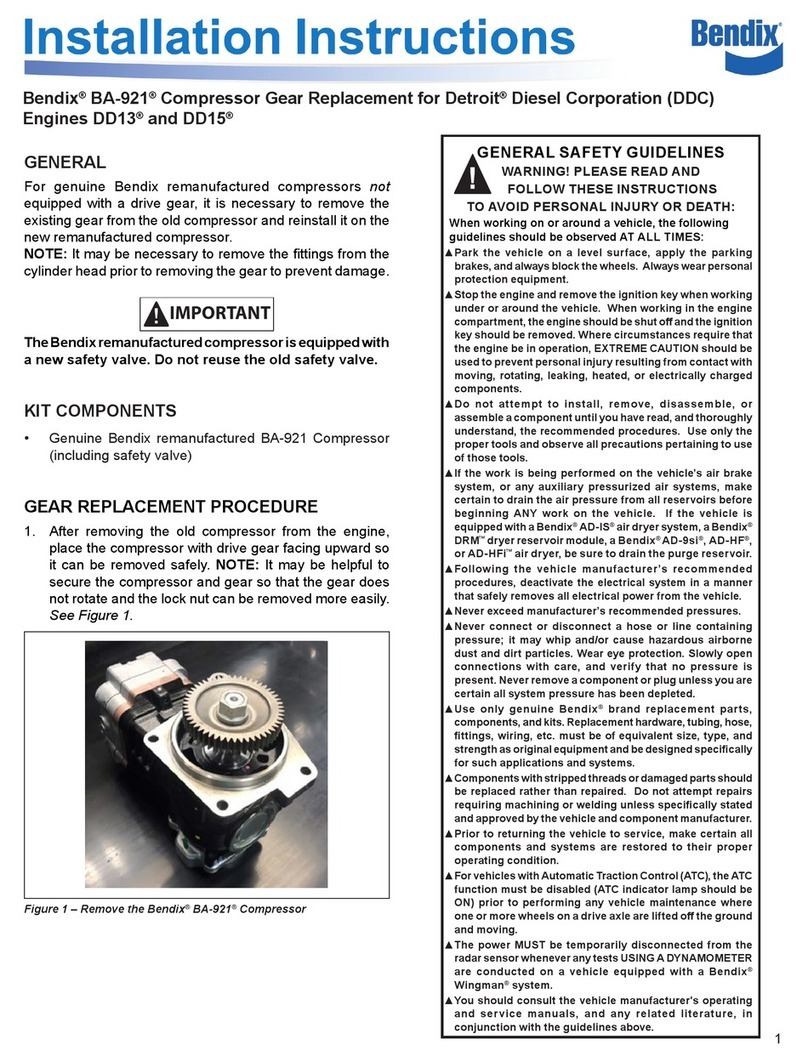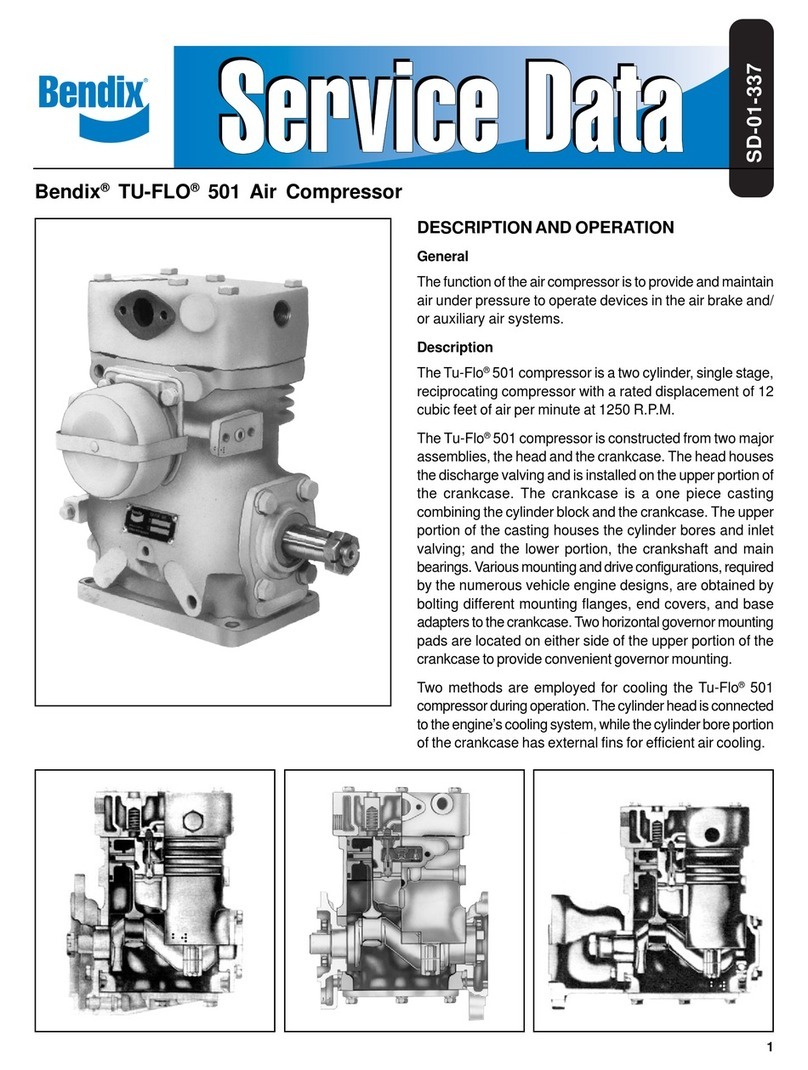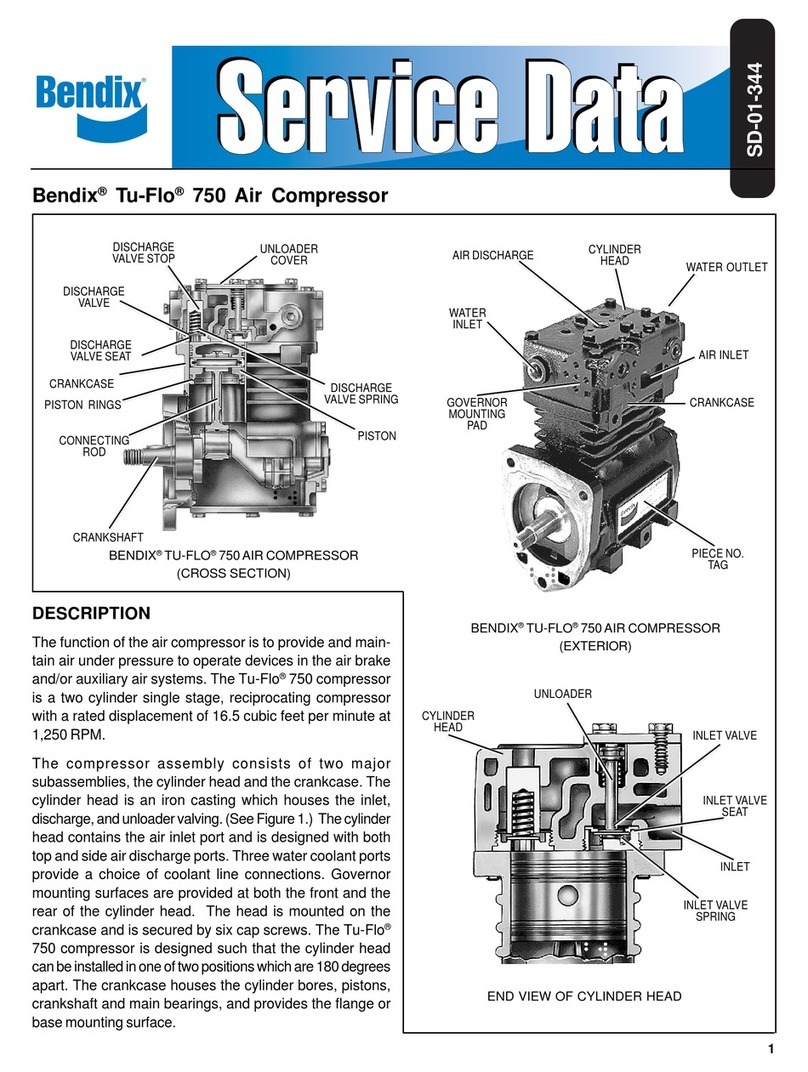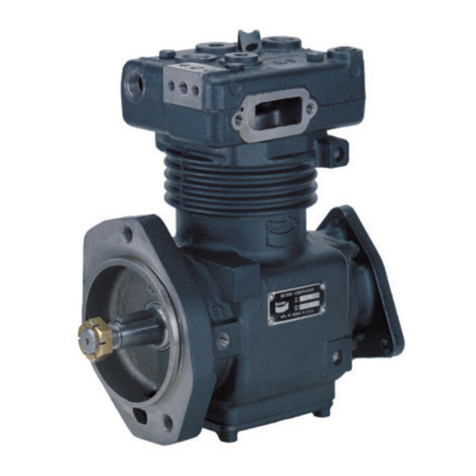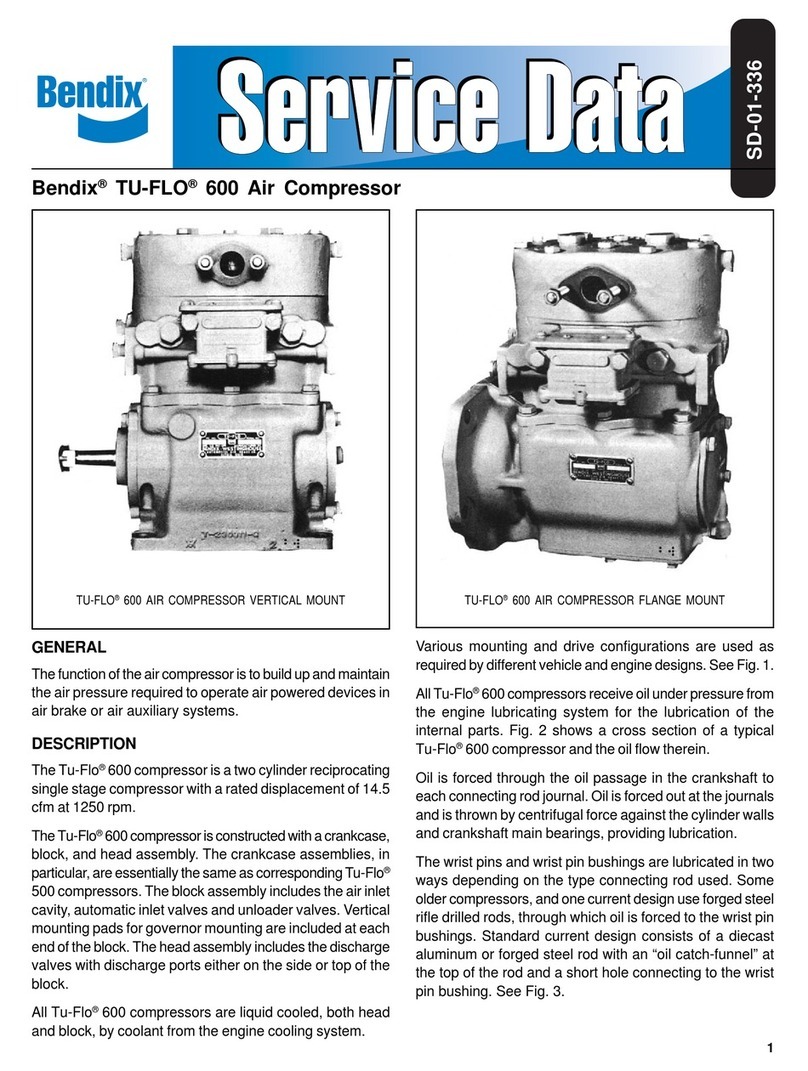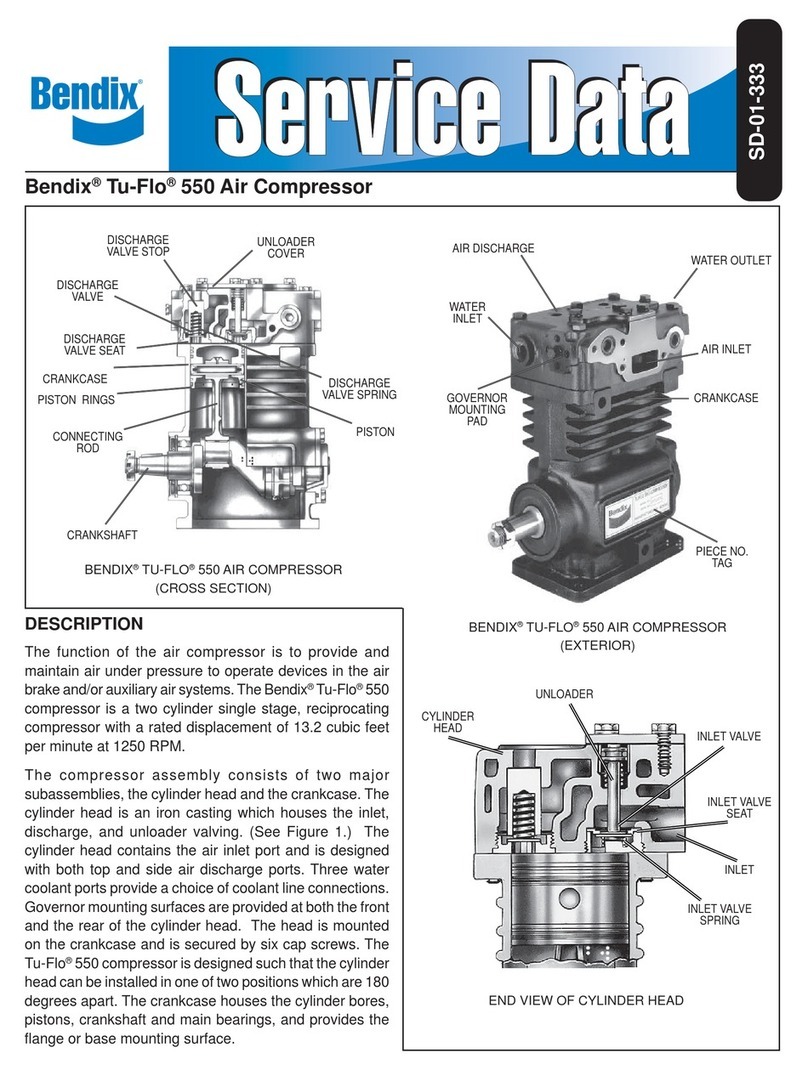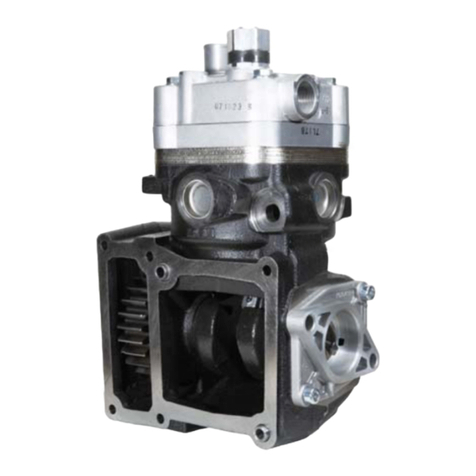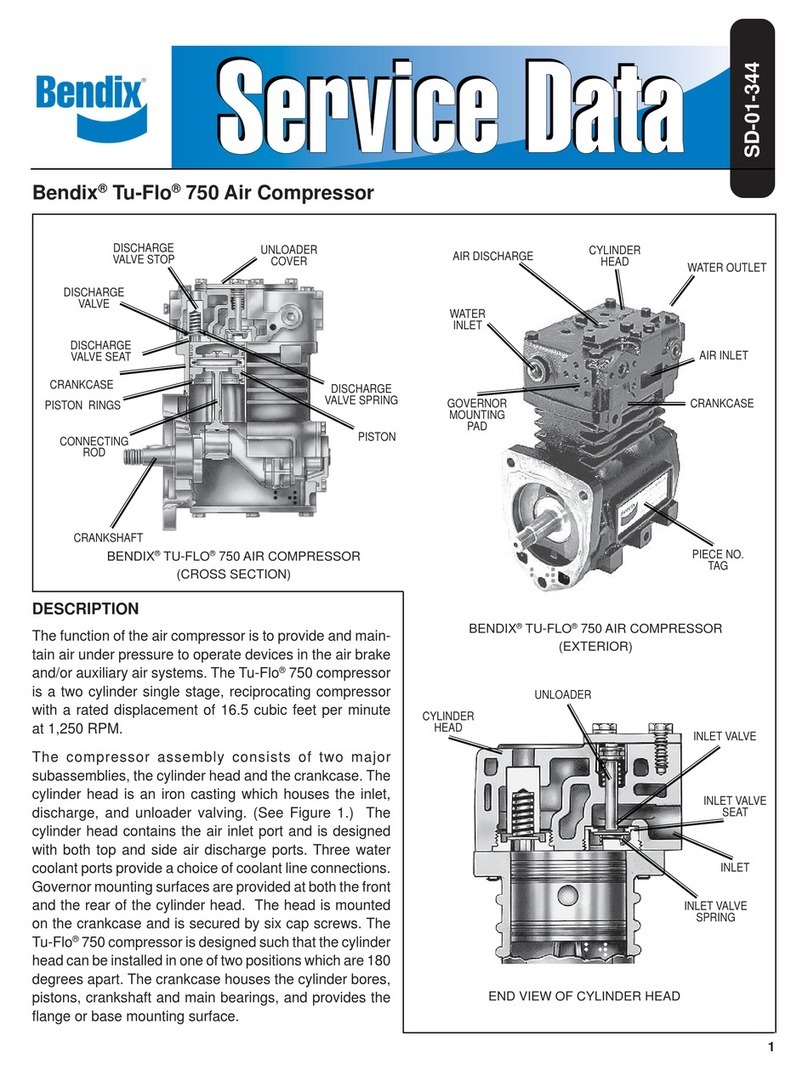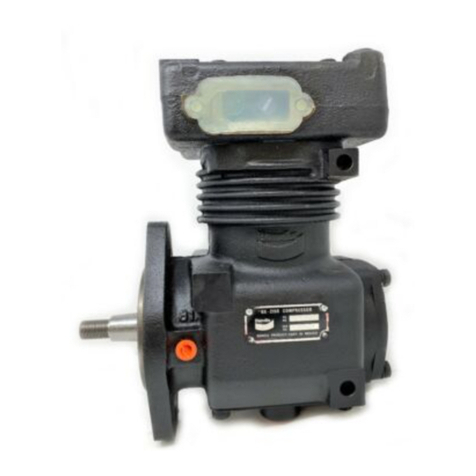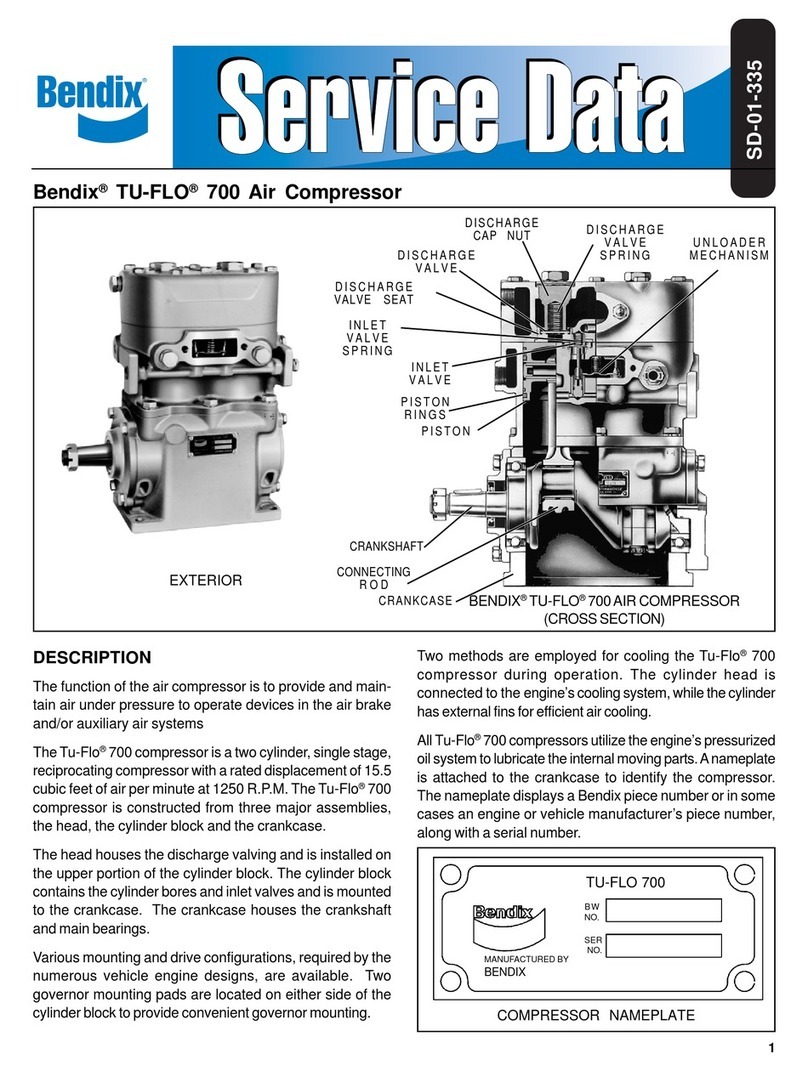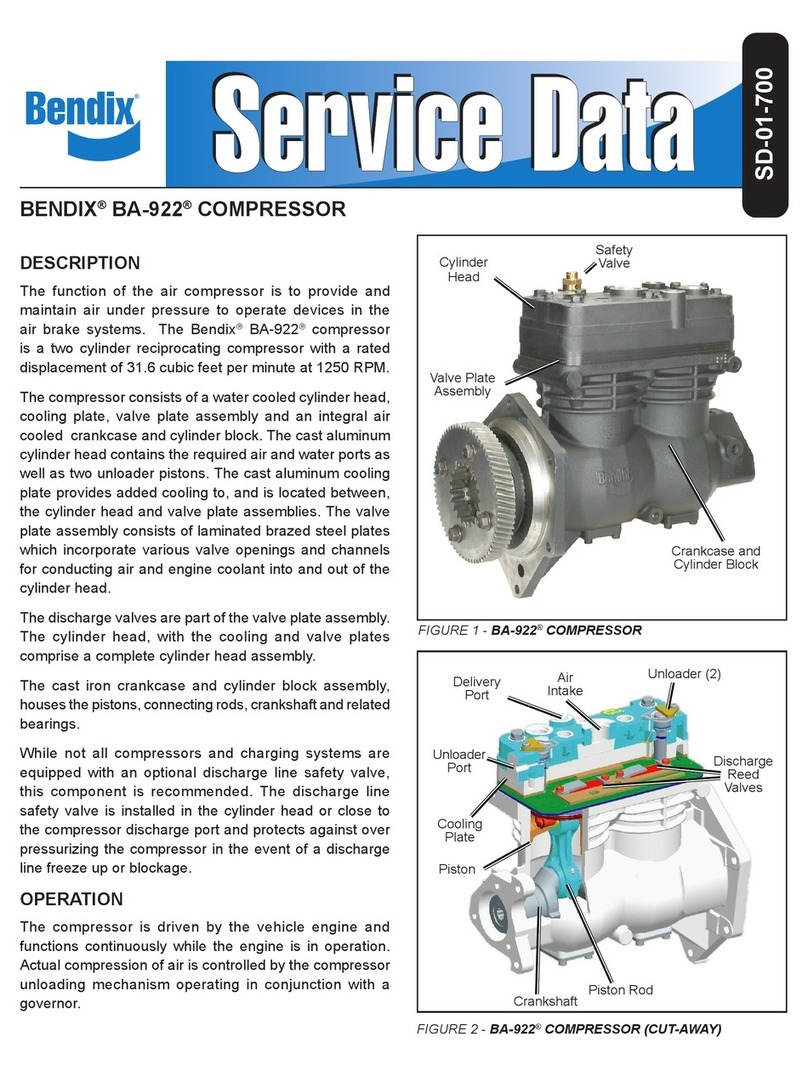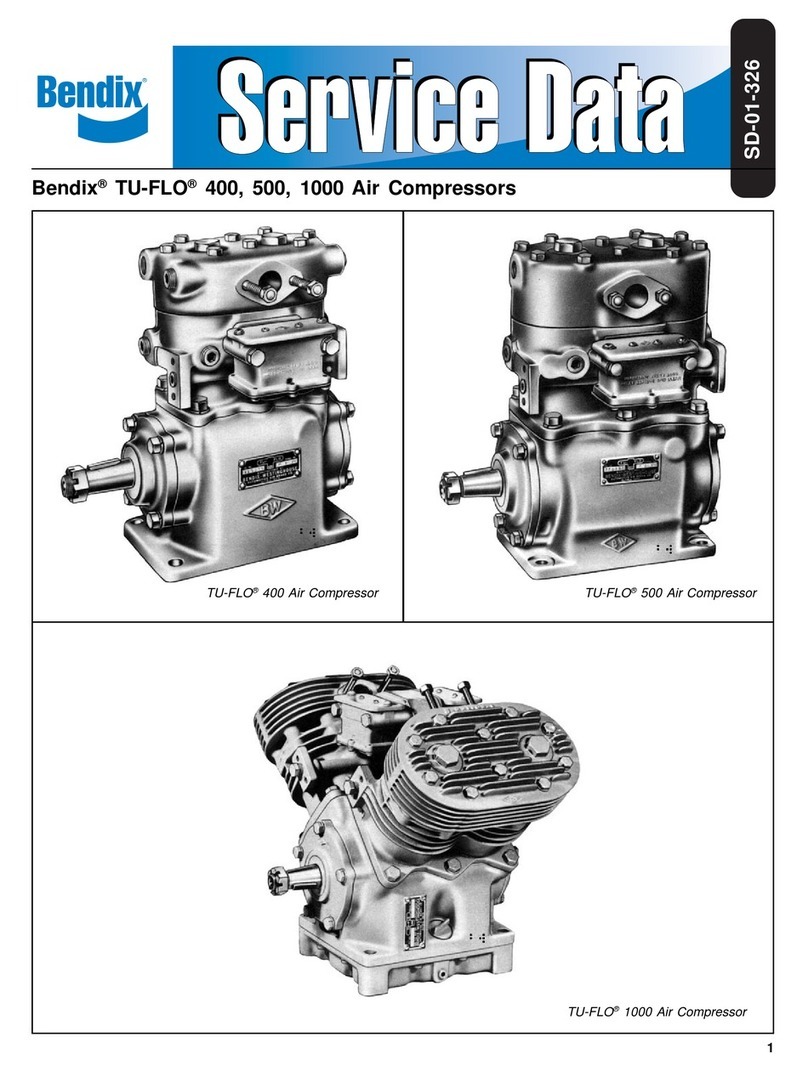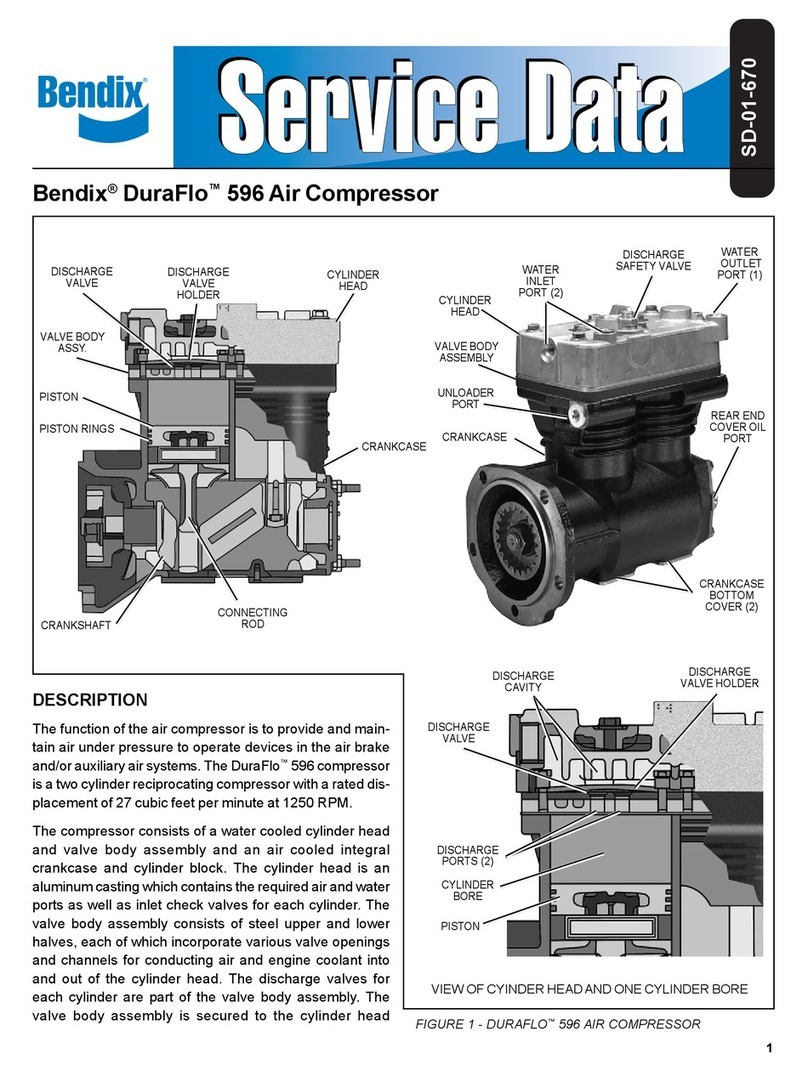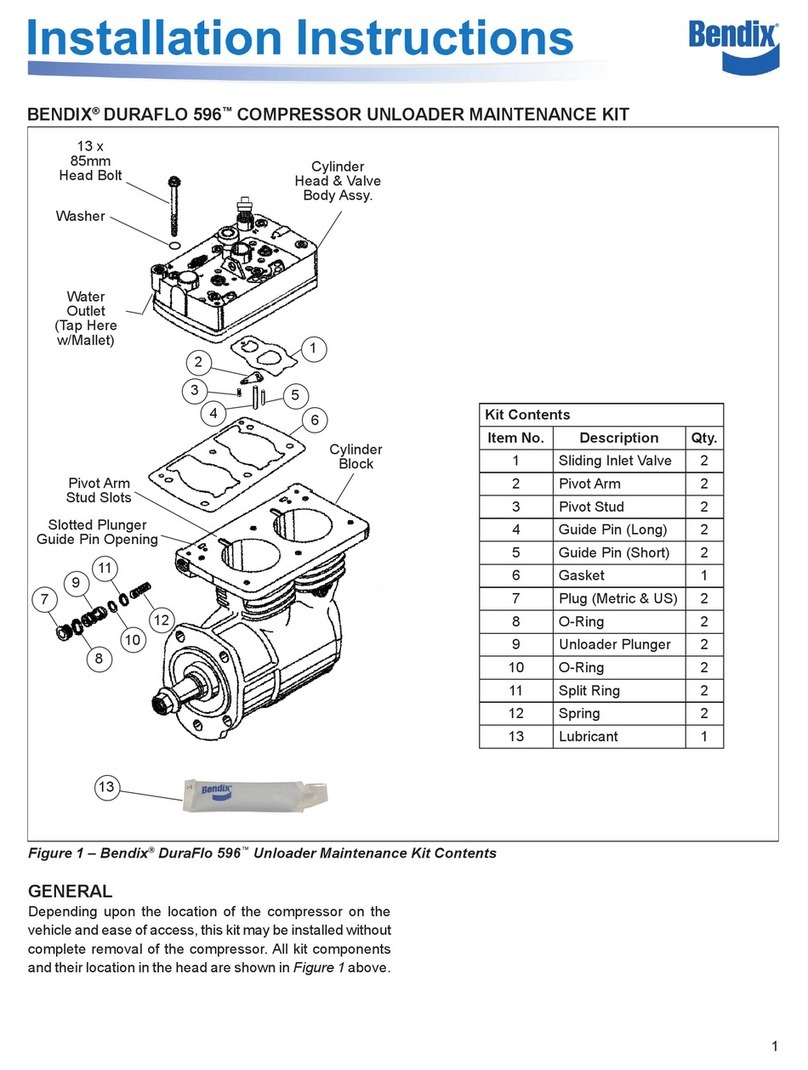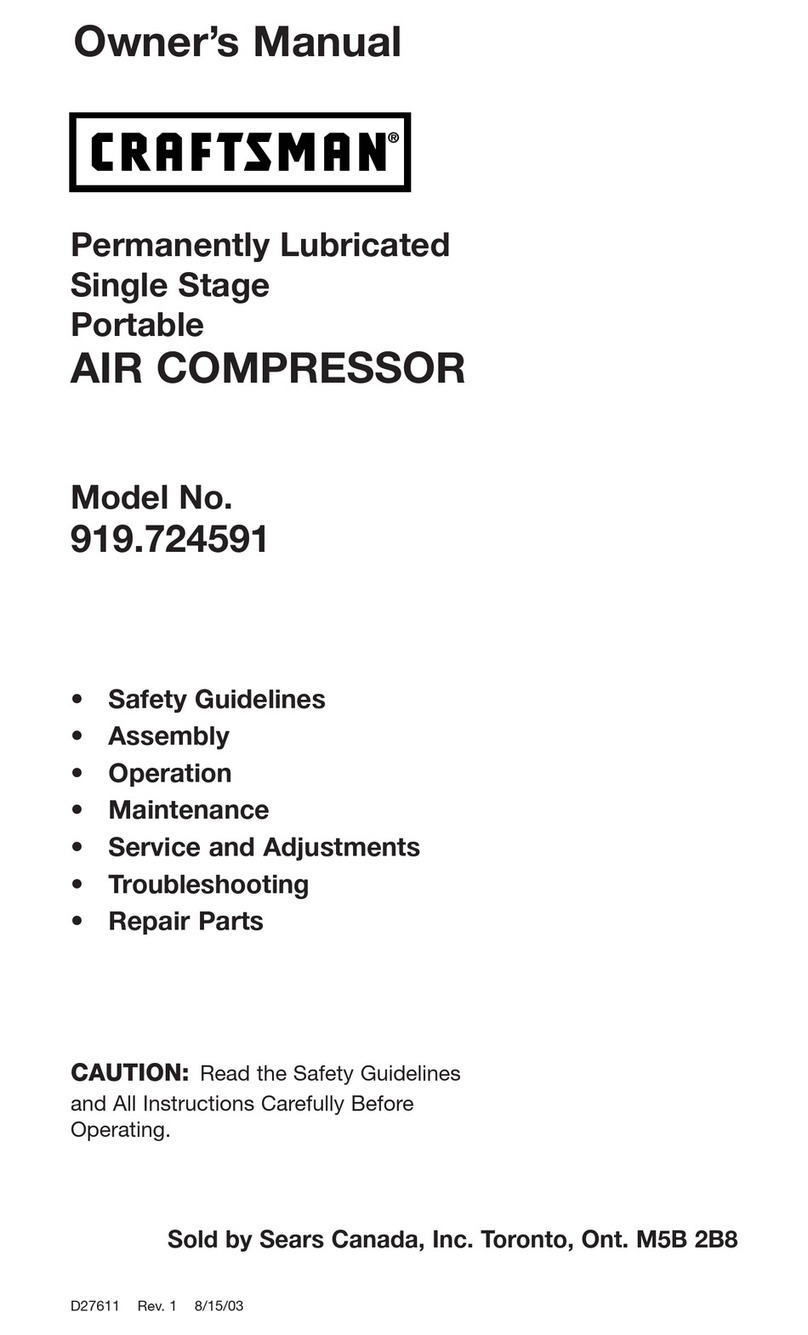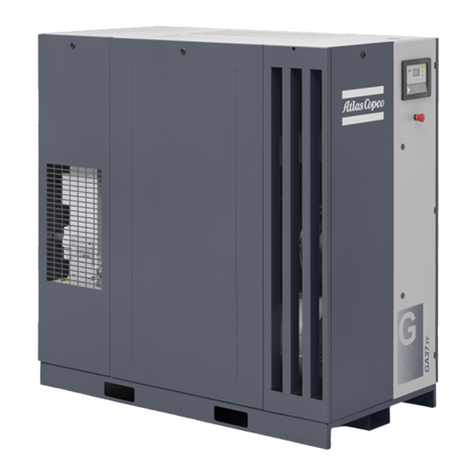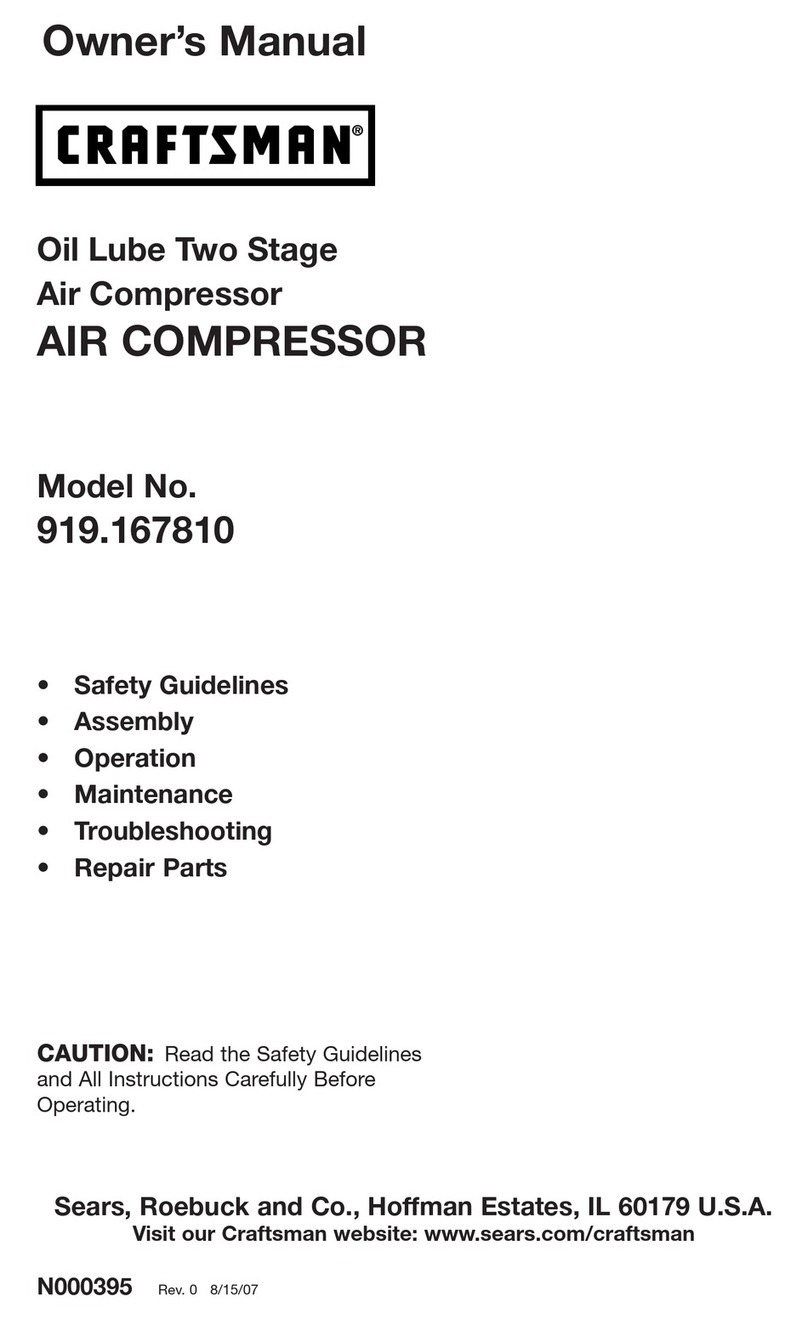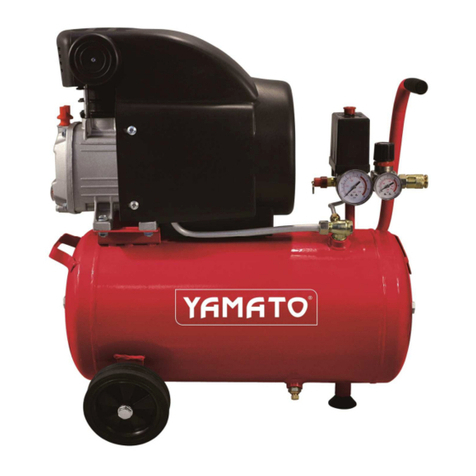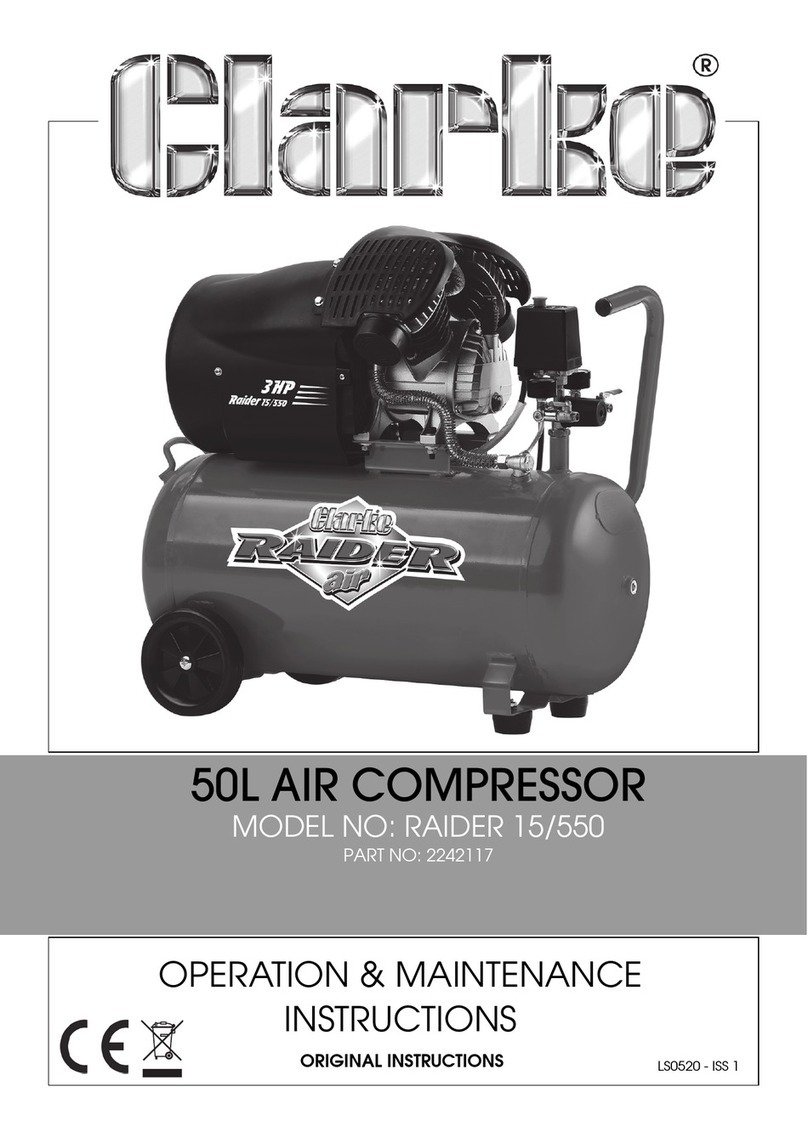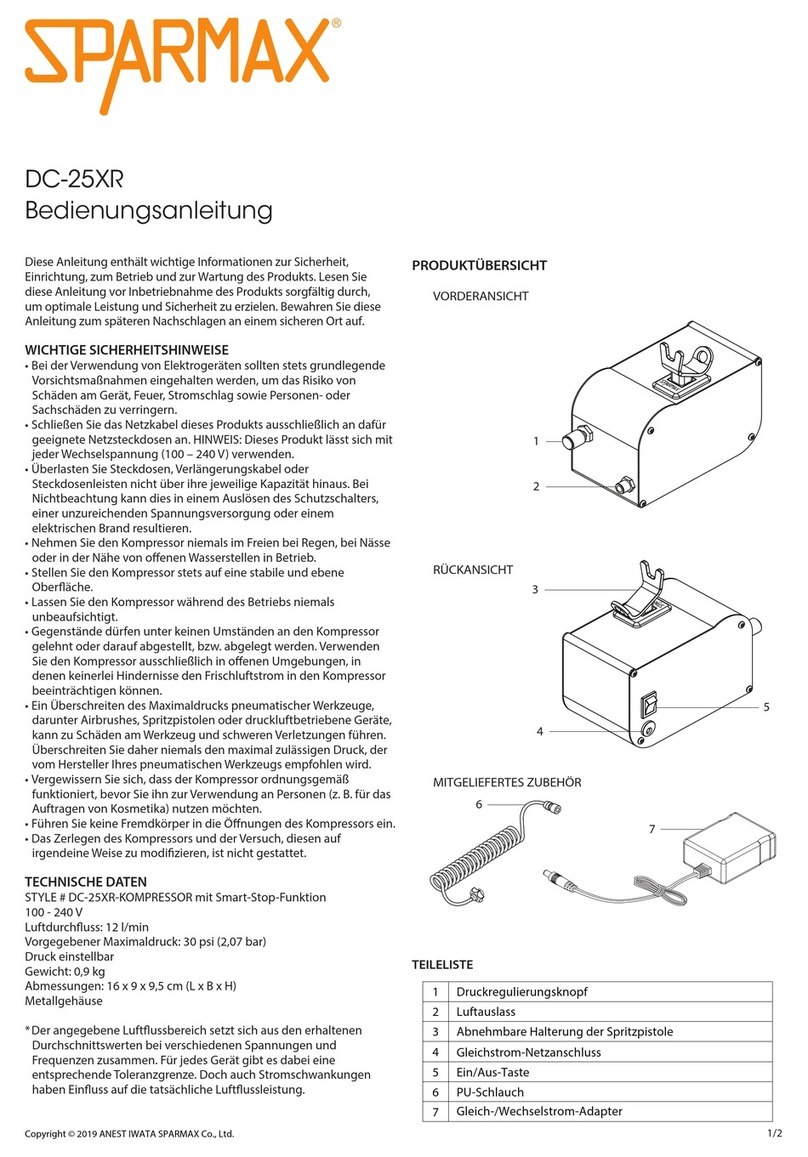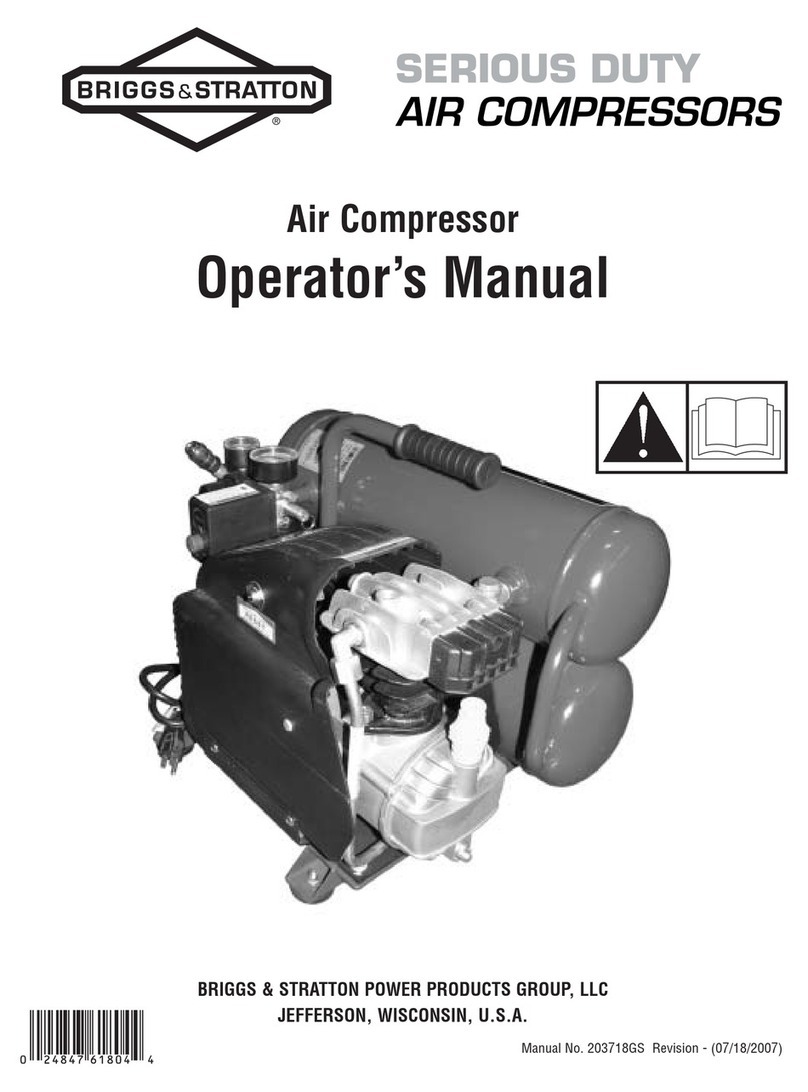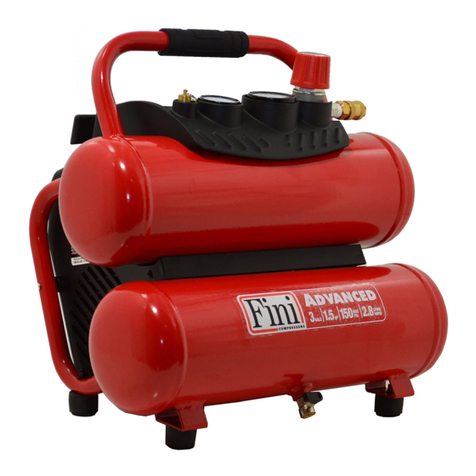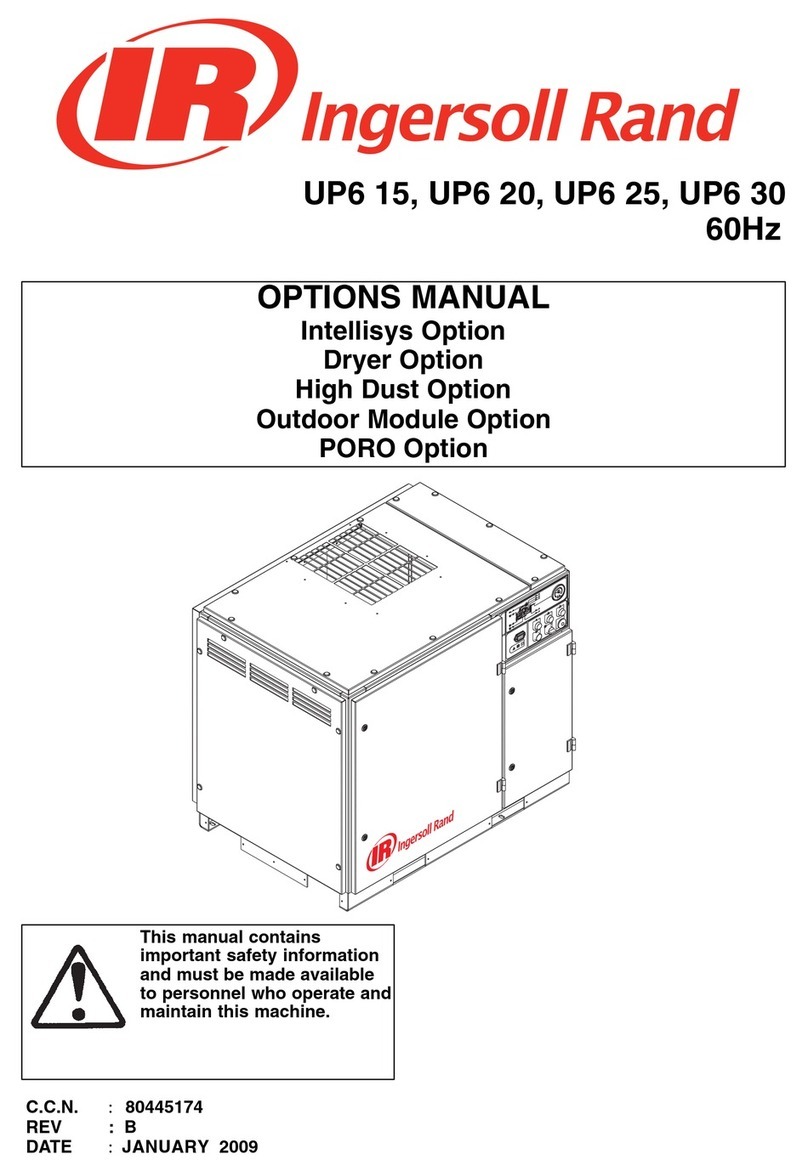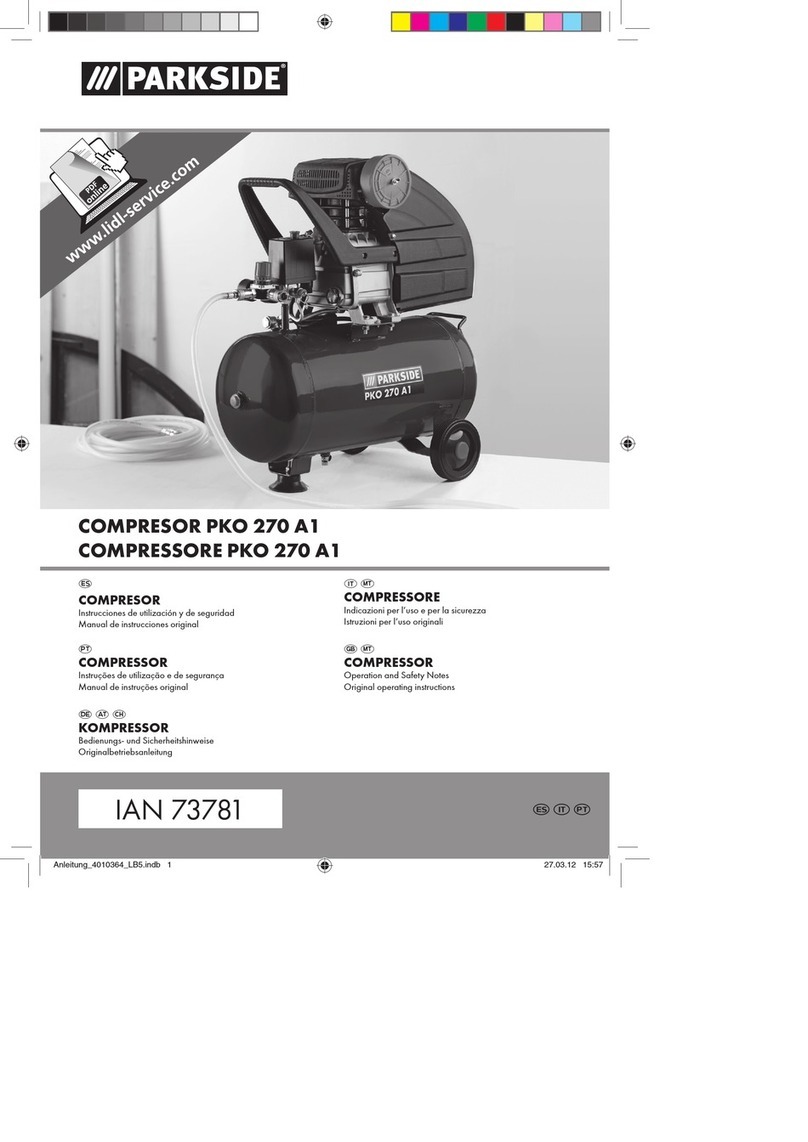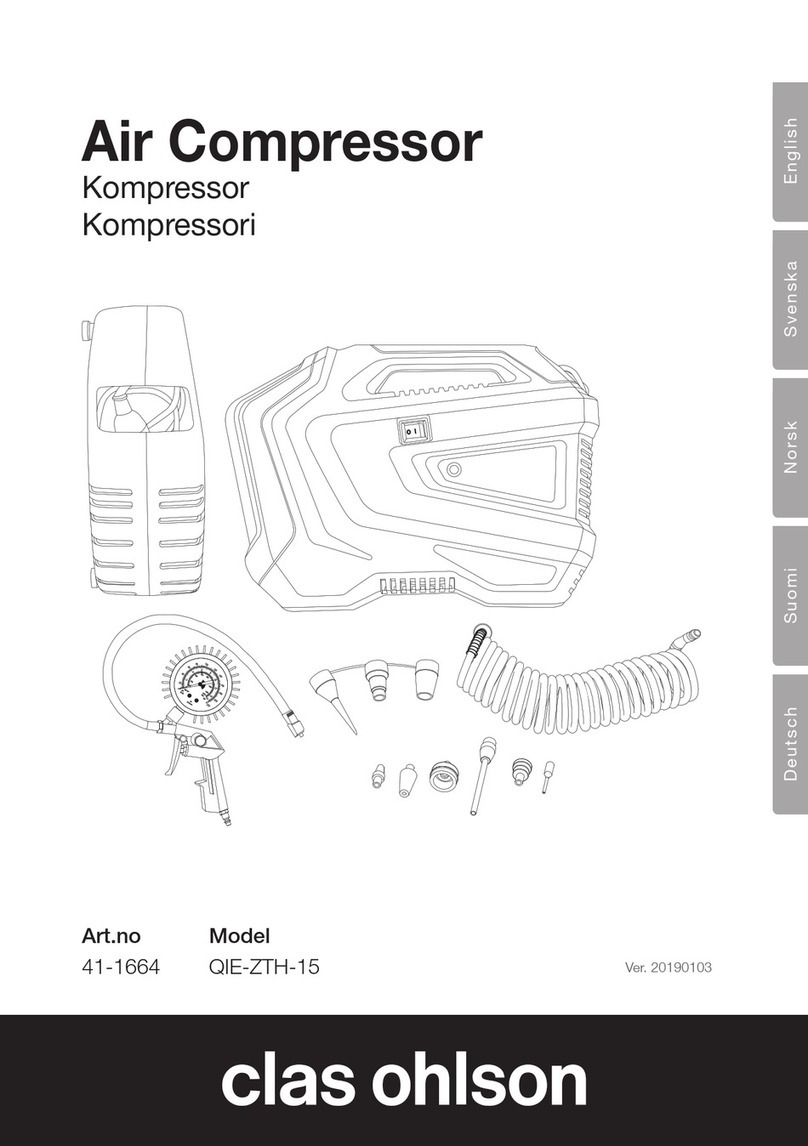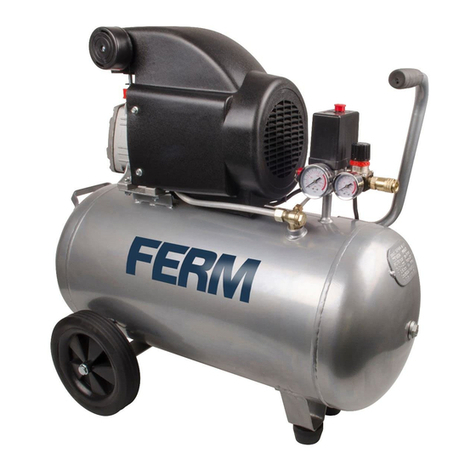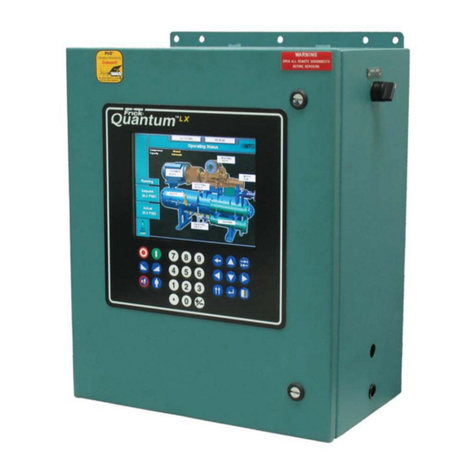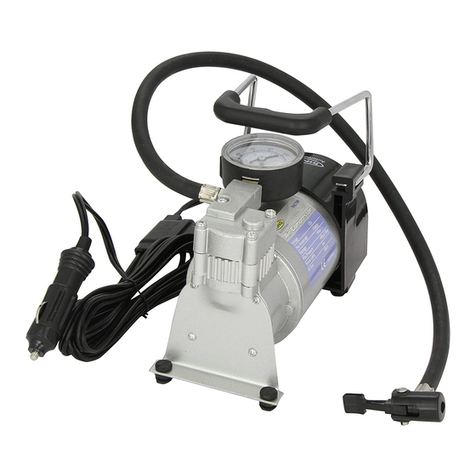
6
3. If the vehicle is equipped with air brakes, make
certain to drain the air pressure from all reservoirs
before beginning any work on the vehicle.
4. Following the vehicle manufacturer’s recom-
mended procedures, deactivate the electrical
system in a manner that removes all electrical
power from the vehicle.
5. When working in the engine compartment the en-
gine should be shut off. Where circumstances
require that the engine be in operation, extreme
caution should be used to prevent personal injury
resulting from contact with moving, rotating, leak-
ing, heated, or electrically charged components.
6. Never connect or disconnect a hose or line con-
taining pressure; it may whip. Never remove a
component or plug unless you are certain all sys-
tem pressure has been depleted.
7. Never exceed recommended pressures and always
wear safety glasses.
8. Do not attempt to install, remove, disassemble or
assemble a component until you have read and
thoroughly understand the recommended proce-
dures. Use only the proper tools and observe all
precautions pertaining to use of those tools.
9. Use only genuine Bendix replacement parts, com-
ponents, and kits. Replacement hardware, tubing,
hose,fittings,etc.shouldbeof equivalent size, type,
andstrengthasoriginalequipmentand be designed
specifically for such applications and systems.
10.Components with stripped threads or damaged
parts should be replaced rather than repaired. Re-
pairs requiring machining or welding should not
be attempted unless specifically approved and
stated by the vehicle or component manufacturer.
11. Prior to returning the vehicle to service, make cer-
tain all components and systems are restored to
their proper operating condition.
REMOVAL
In many instances it may not be necessary to remove the
compressor from the vehicle when installing the various
maintenancekitsandserviceparts.Themaintenancetech-
nicianmustassesstheinstallationanddeterminethecorrect
courseof action.
Theseinstructionsaregeneralandareintendedtobeaguide.In
somecasesadditionalpreparationsandprecautionsareneces-
sary. In all cases follow the instructions contained in the vehicle
maintenancemanualin lieu of theinstructions,precautions and
procedurespresented inthis manual.
1. Block the wheels of the vehicle and drain the air pres-
sure from all the reservoirs in the system.
2. Drain the engine cooling system and the cylinder head
ofthecompressor. Identify anddisconnect all air,water
and oil lines leading to the compressor.
3. Remove as much road dirt and grease from the exte-
rior of the compressor as possible.
4. Remove the discharge and inlet fittings, if applicable, and
note their position on the compressor to aid in reassembly.
Note: If a cylinder head maintenance kit is being
installed, stop here and proceed to
PREPARATION FOR DISASSEMBLY. If
replacing the compressor continue.
3. Remove any supporting bracketing attached to the
compressorandnotetheir positions on the compressor
to aid in reassembly.
5. Removetheflangemountingboltsandremovethe com-
pressor from the vehicle.
6. Inspectgearand associated drive partsforvisible wear
or damage. Since these parts are precision fitted, they
must be replaced if they are worn or damaged. If re-
placing the compressor or replacing the drive gear,
removethe drivegear from the compressor crankshaft
usingagear puller.
7. If the compressor is being replaced stop here and pro-
ceed to "Installing The Compressor" at the end of the
assemblyprocedure.
PREPARATION FOR DISASSEMBLY
Removethe balance of road dirt and greasefrom the exte-
rior of the compressor with a cleaning solvent. Mark the
rearendcoverorendcoveradapter in relation to the crank-
case. It is recommended but not specifically necessary to
marktherelationship of the cylinderheadto the valve plate
assembly and crankcase and cylinder block assembly.
Aconvenient method toindicate the aboverelationships is
to use a metal scribe to mark the parts with numbers or
lines. Do not use marking methods such as chalk that can
be wiped off or obliterated during rebuilding.
Priorto disassembly make certain that the appropriate kits
and or replacement parts are available. Refer to figure 9
during the entire disassembly and assembly procedure.
CYLINDER HEAD
1. Removethedischarge safety valve (10) from the cylin-
der head.
2. To restrain the spring force exerted by balance piston
spring (5), hold the unloader cover (2) in place while
removingthetwo unloader cover capscrews (1). Care-
fully release the hold on the unloader cover until the
springforceisrelaxed, then remove the unloadercover
(2).
3. Remove the unloader cover gasket (3).
